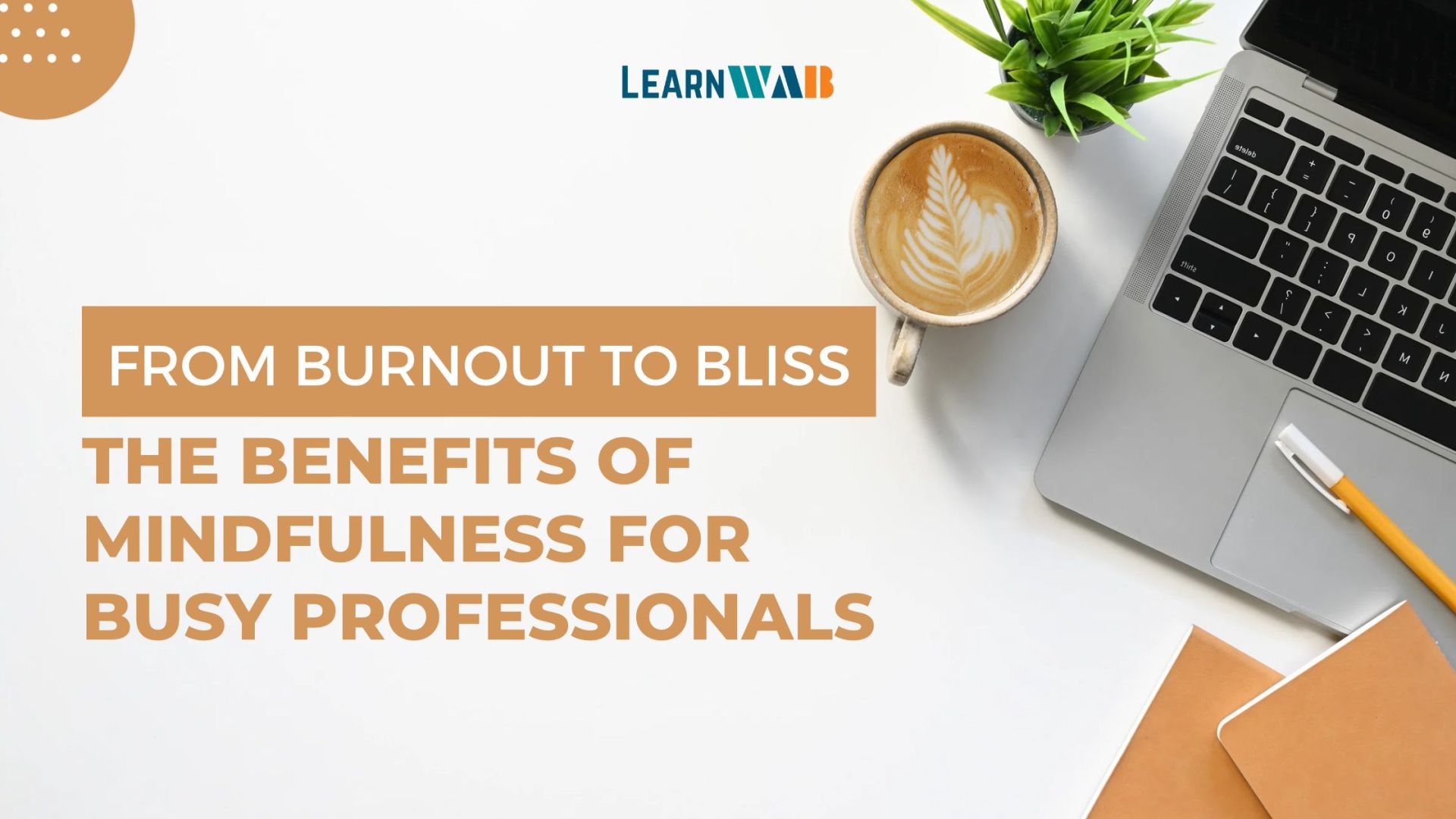In today's fast-paced world, it's easy to get caught in a never-ending cycle of work, stress, and burnout. Many professionals feel overwhelmed and under pressure to perform, leading to increased stress, anxiety and even depression. What if there was a way to cultivate a greater sense of peace, focus, and balance in your life?
This is where mindfulness comes into play. At its core, mindfulness is the practice of being fully present and engaged in the present moment without judgment or distraction. By becoming more aware of your thoughts, emotions, and physical sensations, you can learn how to block distractions and focus more fully on the task at hand. This increases productivity, creativity, innovation, and increases well-being and satisfaction in all aspects of our lives.
Empty space, drag to resize

Empty space, drag to resize
So why should professionals learn about mindfulness? Here are some of the key benefits:
Mindfulness can help professionals improve their focus and concentration by training their minds to stay present in the moment and resist distractions. For example, a business leaders might use mindfulness techniques to stay focused during a high-pressure presentation or negotiation, reducing the risk of mistakes or miscommunication.
Mindfulness can also enhance creativity and problem-solving skills by allowing professionals to tap into their innate creativity and innovative abilities. For example, a marketing executive might use mindfulness techniques to generate new and innovative ideas for a marketing campaign, leading to more effective messaging and branding.
Mindfulness has been shown to be an effective way to reduce stress and anxiety, promoting a sense of calm and balance even in the face of challenging situations. For example, a healthcare professional might use mindfulness techniques to reduce stress and anxiety during a high-pressure surgery or emergency situation, allowing them to stay focused and perform at their best.
Mindfulness can enhance interpersonal relationships and communication skills by promoting greater empathy, understanding, and connection. For example, a sales professional might use mindfulness techniques to build stronger connections with clients and customers, leading to improved collaboration and more positive outcomes.
Finally, mindfulness can promote overall well-being and happiness, both in and outside of work. For example, a teacher might use mindfulness techniques to reduce stress and improve job satisfaction, leading to a more fulfilling and rewarding career. Additionally, mindfulness can help professionals maintain a healthy work-life balance, reducing the risk of burnout and promoting greater overall health and well-being.
So how can professionals learn about mindfulness and start incorporating it into their daily lives? There are a variety of resources available, from books and
online courses to mindfulness-based therapy and meditation classes. The key is to find a practice that resonates with you and commit to making it a regular part of your routine.
In conclusion, mindfulness is not a passing trend or fad, but a powerful tool for personal and professional growth and development. It can increase strength and focus, increase creativity, reduce stress and anxiety, improve relationships and communication, and promote overall well-being. Don't wait – start exploring mindfulness today and discover the many benefits it has to offer!
This
LearnWAB signature mindfulness course will teach you everything you need, to get started with the practice of mindfulness and apply it to your time at work and in life.
Mindfulness has helped so many people make sense of their relationship with this complex world, and to function more effectively and live more wisely. And I hope this course will do the same for you.
Each day’s learning consists of four parts: a video guidance, an audio guidance, a text guidance, and a check-in guidance consisting a poll question and a journal question. The time spent on these four parts in total should not exceed 20 minutes every day.


